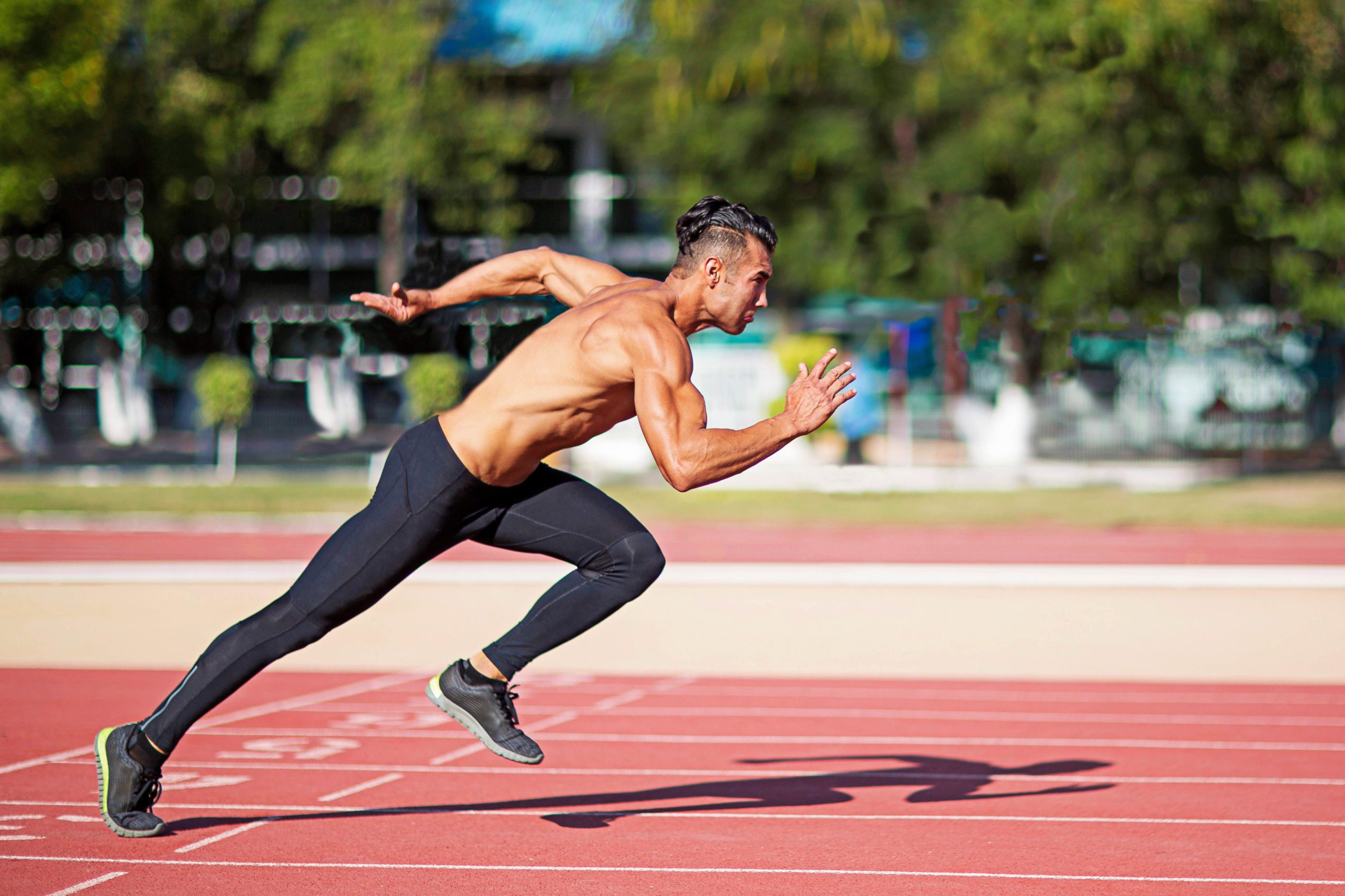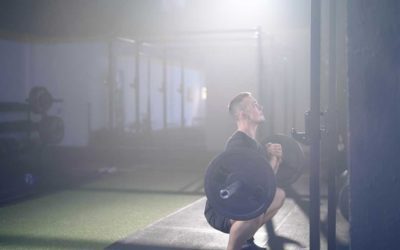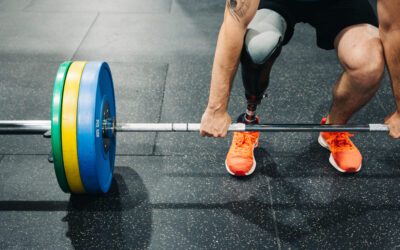5 Powerful Plyometric Exercises You Can Do Anywhere

Kyle Donsberger is a CSCS, lifelong athlete, and owner of Impulse Athletics. As a current member of the Canadian Skeleton Team and 2012 & 2016 Olympic Trials semi-finalist in the 400 meters, he knows a thing or two about speed training. In this blog, he introduces you to some simple plyometric drills that prevent injury and improve performance in all the things you do every day.

Change the Way You Train
Why You Should Do Plyometrics
Although you probably still participate in physical activities as you get older (like running or recreational sports), you likely don’t train to perform in those sports. Plyometric exercises help your body absorb and generate force in a safe environment that improves performance in the physical activities you still love to do.
Does this mean you need to start spending countless hours in the gym? Absolutely not. The best part about these plyo movements is that you don’t need any equipment to perform them! You can go out to the local park and find some grass and jump to your heart’s content.
Here’s the top five plyometric exercises you can do anytime, anywhere, to maximize your power for healthier bones, joints, and ligaments.
1. Squat Jump
How it’s done: Stand tall on your toes and then drop down through your hips. Explode up and land in an athletic position (knees bent and sitting back into your hips). Make sure you jump straight up in the air, minimizing forward travel. Here’s a visual of multiple squat jumps in a row, but feel free to start with one:

Also, be aware of your landing position. Failure to absorb landing through your hips causes issues with your knees, ankles, and feet. Avoid this by sitting into your hips upon landing. (A good mental cue I picked up from gymnastics coaches is to imagine like you’re sitting on the bike when you land.)
Keep your chest up and your eyes looking forward. This keeps your spine neutral, allowing your body to better transfer power. It also prevents back injuries.
2. Double Leg Hop / Standing Broad Jump
The double leg hop (also known as the standing broad jump) is similar to the squat jump, except you jump forward instead of straight up.
I know you’re probably going to get sick of hearing this by the end of this blog (if you’re not sick of it already), but I’m going to harp on it for as long as I coach: the key to minimizing the risk of injury while also improving performance is loading through your hips instead of your knees.
How it’s done: Sit back into your hips, keeping your chest up and eyes looking where you want to go. As mentioned before, this keeps your spine neutral. After loading through your hips, shift onto your toes and jump forward.
I recommend starting with a smaller jump (50-60% power) to get the feel for it. If it feels comfortable, progress to full power. Land like you would the squat jump: into your hips in an athletic position, as if you’re sitting on a bike.
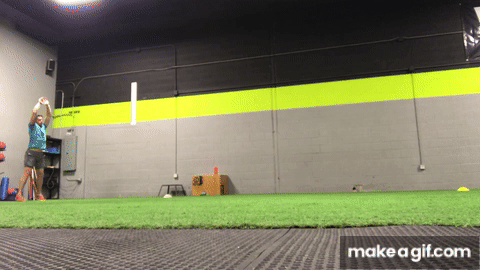
Keeping your chest over your toes is a simple mental cue to avoid landing through your knees. Just make sure your core is stable to keep this from happening to avoid folding at the hips.
Another common mistake with this movement is leaning back on your landing or falling backward. This happens when you reach your feet too far forward. The fix for this is the same as when we land through the knees – keep your chest over your toes.
3. Vertical, Horizontal, Vertical Jumps
How it’s done: It’s easiest to break this drill down into simple pieces. Think of it as doing a squat jump into a double leg hop and finishing it off with another squat jump. So maybe a better name for this is squat jump, double leg jump, squat jump.
The key for this one is (you guessed it!) sitting into your hips.
Start tall and then load your body by sitting into your hips before jumping vertically. Land in an athletic position and jump forward (double leg hop). Land a second time (again through the hips) and jump vertically (squat jump).
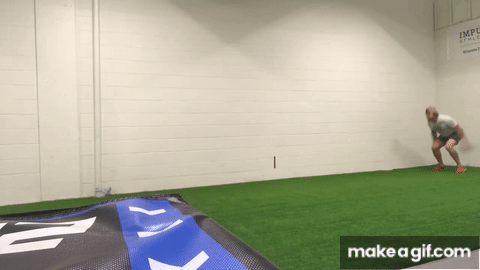
Focus on traveling a minimal distance forward on the vertical jumps and a maximal distance on the horizontal jumps.
4. Lateral Hop
The lateral hop works your body moving side-to-side. It’s not a super common exercise people do, although it’s super beneficial from a loading standpoint.
How it’s done: I recommend setting up somewhere where there is a line on the ground (gymnasium, lined field, local track, etc.).
Pick a leg to start on (let’s say left) and lift the other foot off the ground. Jump from your left leg onto your right leg while staying on the line. Start at 60-70% max power to get a feel for it, and then build it up to max power while maintaining the lateral hop.

I said it before and I’ll say it again: load through the hips! Loading through your hips and pushing off the ground leg (instead of reaching with the other leg) allows you to control direction much better and ensures you stay lateral.
This also solves the other common mistake I see, which is pulling the “off” leg. Doing this not only makes the move less powerful, but also leads to issues with your feet and knees. Pushing off the ground leg gives you significantly more control over your body.
5. Single Leg Hop
How it’s done: Pick a leg, load through the hip on that leg, and jump forward. Keep your eyes and chest up to maintain balance and prevent collapsing at the waist. Land on both feet after the jump in an athletic position.

If you want to generate maximum power (which I’m sure you do), work on cycling the take-off leg. This allows you to generate more momentum. As you progress the single leg hop to multiple single leg hops (which we’ll talk about later), the power compounds.
Try doing one (or all) of these moves a few days a week. Your bones, joints, ligaments, and tendons will thank you for it.
Find Your Perfect Training Plan
Sometimes all you need to reach your destination on your fitness journey is an expert guide. We've got you covered. Browse from thousands of programs for any goal and every type of athlete.
Try any programming subscription free for 7 days!
Want Training Tips, Exercise Guides & Knowledge Bombs Sent to Your Inbox?
Sign up for the FitNerd newsletter from TrainHeroic
Related articles
How To Zercher Squat: One Exercise To Rule Them All
I have a secret weapon exercise that will get us really close; it has a lot of bang for its buck. It builds massive quads, big glutes, a wide back, and some awesome biceps. Exactly what every athlete needs.
What Does Paralympic Strength Training Look Like?
Paralympians undergo rigorous training when preparing for the Paralympic Games. While the Paralympics only last about two weeks, getting ready takes place all year, as these athletes are among the most dedicated in the world. Here’s how people with disabilities...
Your Guide to Passive Recovery Strategies
What is Passive Recovery? I don’t think that there exists a complete guide for athletes that tackles the underrated topic of “Recovery-Regeneration” strategies. I plan to disclose a majority of the scientific and practical information that I know of on this topic and...

Join the community
Sign up for the latest training news and updates from TrainHeroic
Support
Made with love, sweat, protein isolate and hard work in Denver, CO
© 2023 TrainHeroic, Inc. All rights reserved.


